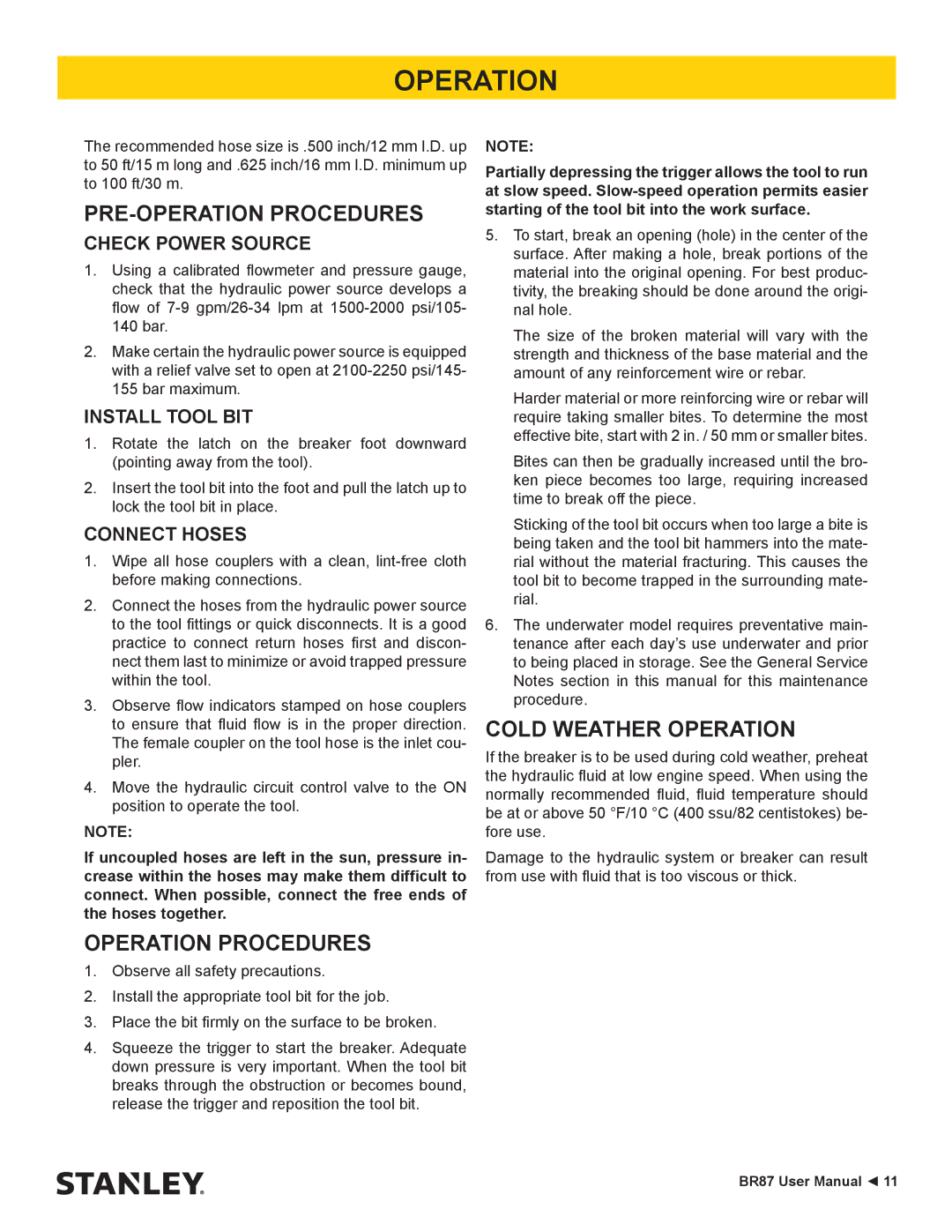BR87 specifications
Stanley Black & Decker BR87 is a robust and innovative tool that is designed to meet the demands of both professional contractors and DIY enthusiasts. This powerful tool combines cutting-edge technology with a user-friendly design, making it an essential addition to any toolbox.One of the standout features of the BR87 is its high-performance motor. Designed to deliver a strong output, this motor ensures efficient operation across a variety of applications. Whether users are drilling into wood, metal, or masonry, the BR87 adapts to different materials effortlessly. Furthermore, the tool's variable speed control allows users to adjust the speed according to the task, providing added precision and versatility.
Another key characteristic of the BR87 is its ergonomic design. The tool is equipped with a comfortable grip that reduces hand fatigue during prolonged use. This is particularly beneficial for professionals who may be using the tool for extended periods on job sites. Additionally, its lightweight design makes it easy to maneuver, further enhancing user comfort.
The BR87 is also packed with advanced safety features. It includes a built-in overload protection system that prevents damage to the motor in case of excessive strain. This feature not only prolongs the lifespan of the tool but also ensures user safety. The design adheres to the highest industry standards, making it a reliable choice for construction and renovation projects.
In terms of technology, the BR87 utilizes a brushless motor, which enhances its efficiency and runtime. Unlike traditional motors, brushless designs produce less heat and require less maintenance, resulting in longer operational life. This technology also contributes to reduced noise levels, making it pleasant to use in residential areas.
Additionally, the BR87 is compatible with a range of accessories and attachments, allowing users to customize their tool for specific tasks. From drill bits to chisels, the versatility of the BR87 makes it suitable for a wide array of projects.
In summary, the Stanley Black & Decker BR87 is a powerful, versatile, and user-friendly tool that combines advanced features with an ergonomic design. With its high-performance motor, brushless technology, and strong safety mechanisms, the BR87 stands out in its category. Whether for professional use or home improvement tasks, the BR87 delivers reliability and efficiency that users can depend on.

